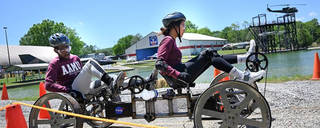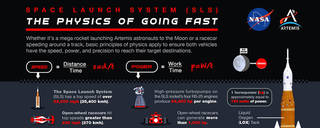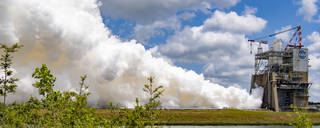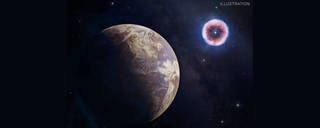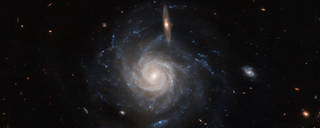A Weekly Summary of Top Content from Marshall, April 24 – April 28, 2023.
Week of April 24 – April 28, 2023
NASA Announces Winners of 2023 Human Exploration Rover Challenge
NASA has announced the winners of the 2023 Human Exploration Rover Challenge (HERC) with Escambia High School in Pensacola, Florida, winning first place in the high school division, and the University of Alabama in Huntsville, capturing the college and university title. The annual engineering competition – one of NASA’s longest standing challenges – held its concluding event Friday, April 21 to Saturday, April 22, at the U.S. Space & Rocket Center in Huntsville, Alabama, near NASA’s Marshall Space Flight Center. More than 500 students from around the world participated during HERC’s 29th anniversary competition. Student teams represented 16 states, the District of Columbia, and Puerto Rico, as well as the countries of Bolivia, Brazil, Colombia, Dominican Republic, India, Mexico, Peru, and Singapore. Teams were awarded points based on navigating a half-mile obstacle course, conducting mission-specific task challenges, and completing multiple safety and design reviews with NASA engineers.
Moon Rockets and Racecars: Navigating the Physics of Speed
When NASA’s Space Launch System (SLS) rocket launches the first astronauts for their journey around the Moon during Artemis II, its four RS-25 engines and two solid rocket boosters will produce more than 8.8 million pounds of thrust at liftoff. Launching mega rockets like SLS beyond low-Earth orbit and driving high-performance racecars around a track require a key understanding of physics, aerodynamics, and precision. NASA is working to land the first woman and first person of color on the Moon under Artemis. SLS is part of NASA’s backbone for deep space exploration, along with Orion and the Gateway in orbit around the Moon, and commercial human landing system. SLS is the only rocket that can send Orion, astronauts, and supplies to the Moon in a single mission. Through Artemis, NASA will land astronauts on the Moon to advance long-term lunar exploration and scientific discovery, and inspire the Artemis Generation.
NASA Tests Critical In-Flight Capability During RS-25 Engine Hot Fire
NASA carried out a critical hot fire of the redesigned RS-25 engine April 26 at NASA’s Stennis Space Center in Bay St. Louis, Mississippi, demonstrating the gimbaling, or pivoting, capabilities needed to stabilize a rocket during a launch and flight to space. Operators at the nation’s largest propulsion test site conducted the first gimbal test of the current RS-25 engine certification series on the Fred Haise Test Stand. The certification series is supporting lead engine contractor Aerojet Rocketdyne as it prepares to produce additional RS-25 engines for future SLS (Space Launch System) flights. The new production includes engines for future Artemis missions to the Moon, as NASA returns humans to the lunar surface to establish a long-term presence for scientific discovery and to prepare for human missions to Mars.
New Stellar Danger to Planets Identified by NASA’s Chandra
Astronomers using data from NASA’s Chandra X-ray Observatory and other telescopes have identified a new threat to life on planets like Earth: a phase during which intense X-rays from exploded stars can affect planets over 100 light-years away. This result, as outlined in our latest press release, has implication for the study of exoplanets and their habitability. This newly found threat comes from a supernova’s blast wave striking dense gas surrounding the exploded star, as depicted in the upper right of our artist’s impression. When this impact occurs it can produce a large dose of X-rays that reaches an Earth-like planet (shown in the lower left, illuminated by its host star out of view to the right) months to years after the explosion and may last for decades. Such intense exposure may trigger an extinction event on the planet.
Hubble Spotlights a Swirling Spiral
The barred spiral galaxy UGC 678 takes center stage in this image from the NASA/ESA Hubble Space Telescope. The spectacular galaxy lies around 260 million light-years from Earth in the constellation Pisces and is almost face on, allowing its lazily winding spiral arms to stretch across this image. In the foreground, a smaller edge-on galaxy seems to bisect the upper portion of UGC 678. Barred spiral galaxies have a bar-shaped structure of stars that extends from opposite sides of the galaxy’s central bulge.
For more information or to learn about other happenings at NASA’s Marshall Space Flight Center, visit NASA Marshall. For past issues of the ICYMI newsletter, click here.



























